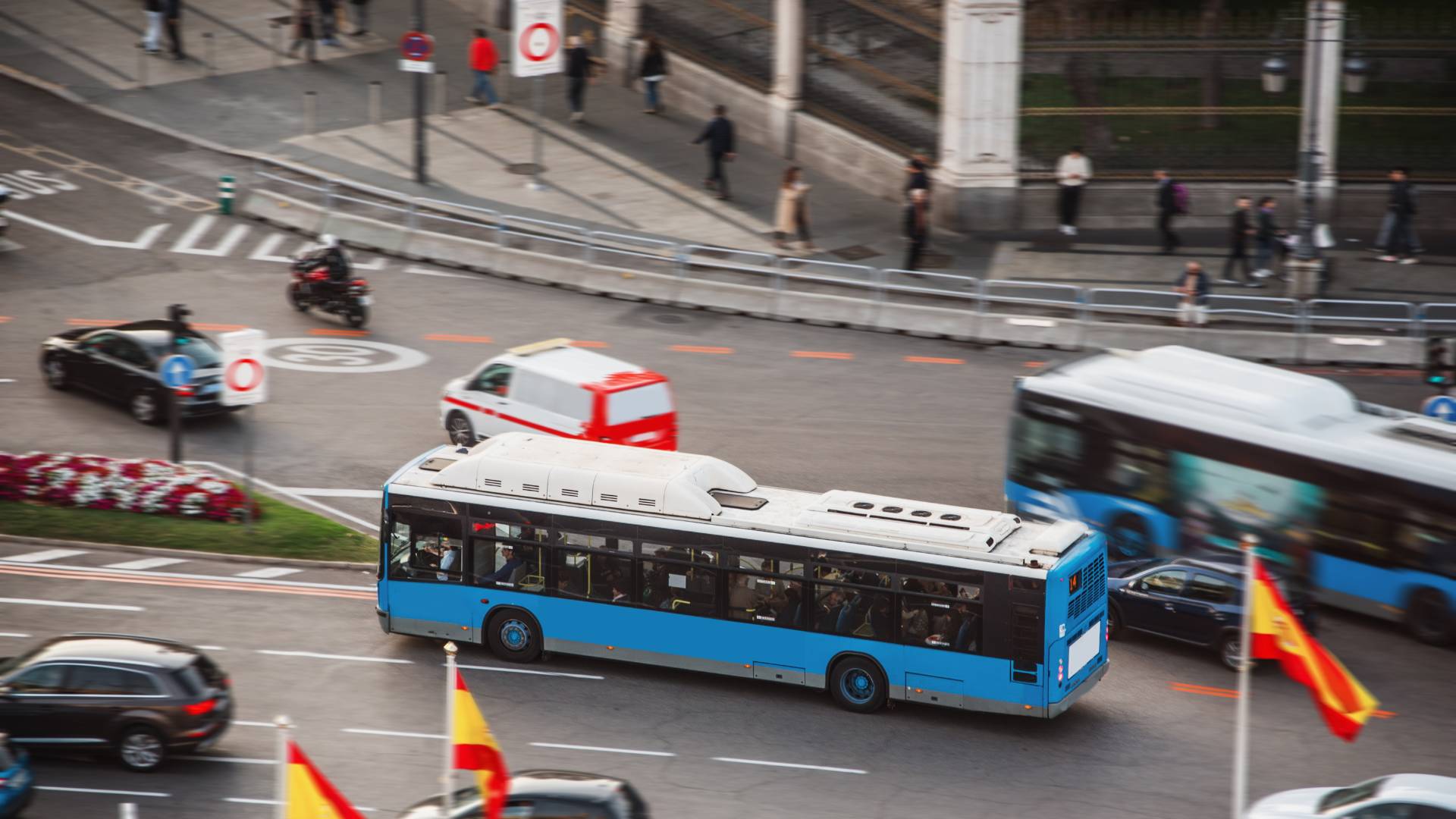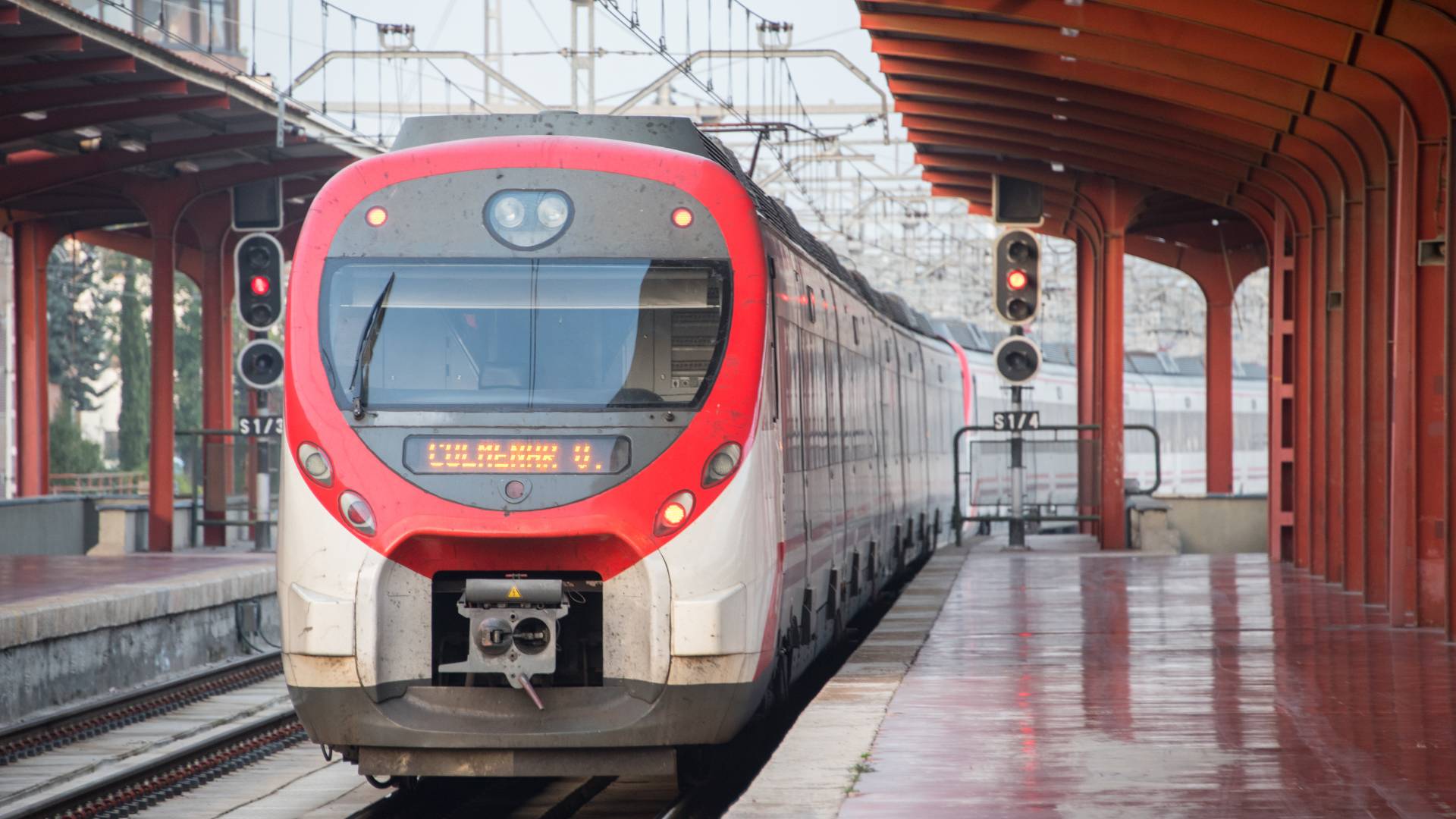Getting around Madrid: Public transport
Find the best way to get around Madrid using the different public transport options and how to use them.
Jale
Madrid has an integrated and efficient public transportation system, including various modes of transportation like metro, bus, and trains.
Thanks to this, using public transport in Madrid is the most affordable mode of transport for quickly getting around the city. So let us guide you through the public transportation in Madrid.
Metro lines in Madrid

The fastest, most convenient and affordable way to commute in Madrid is by metro. With over 300 stations, the Madrid metro system is one of the most extensive urban networks in Europe. It’s also surprisingly cleaner than other major metro networks, such as the Paris metro.
The Madrid metro has 4 travel zones (A, B1, B2, and B3) divided into 13 metro lines, and each line is differentiates by color and number. Zone A covers all the central areas and major attractions.
Some tips for using the metro:
- If you've moved to Spain with your pet, you should know that dogs must wear muzzles and leashes even though dogs are allowed on metros.
- Use Line 8 to reach the city centre from Madrid Airport.
- You can change your direction and make multiple connections with the same ticket.
- Be cautious with pickpockets.
- Don’t throw away your ticket to avoid getting a fine since the conductor might ask you to show it.
- Keep in mind that the the last train leaves the first metro station at 1:33 a.m.
Madrid metro times: Every day from 6:05 a.m. to 2 a.m.
Bus lines in Madrid

Madrid is one of the cities with the most extensive bus system in the world. Its 200 bus lines cover a 3,000km area with 10,000 stops, connecting every corner of the city. Aside from daytime lines, Madrid has 26 lines called Búhos operating at night.
Madrid bus times: Operating hours vary depending on the line. But generally, buses run from 6 a.m. until 11:30 p.m. Night buses operate from 11:55 p.m. until 5:50 a.m.
Madrid Cercanías

Madrid has a train system called Cercanías. The train system mainly connects the suburbs of the autonomous community of Madrid with the centre. Cercanías consists of 9 lines (named C1 to C10) and 89 stations and is connected to the main metro stations.
Some tips for using the Cercanías:
- Never throw away your Cercanías tickets, as you need them to exit.
- All Cercanías lines except C9 pass from Atocha station, which has a connection to metro Line 1.
- Sol is located in the centre and has 3 metro connections (Line 1,2, and 3).
- Recoletos is another central station. Since it's much smaller than Sol, it gets less crowded.
- Station Méndez Álvaro is also the biggest bus station and has a connection to metro line 6.
- On weekdays, trains run every 15-30 mins. But during weekends, they’re less frequent.
Madrid Cercanías operating hours: Every day between 5 a.m. - 5:30 a.m. to 12 a.m.
Bikes in Madrid

There’s a city-wide eco-friendly electric bike service called BiciMAD. They’re handy for short destinations in the city centre. They offer subscriptions or pay as you use.
If you don’t have a subscription, you can use the bikes for 4 hours without having to pay a €4 penalty fee. The first hour costs €2 and then you pay an additional €2 for every hour after.
For an annual subscription, you can use them with or without cards: annual subscription costs €15 with a card and €25 without the card.
Getting a public transport ticket

You can buy tickets for the metro and bus from vending machines in the metros and some tobacco shops. One-way single ticket for the bus costs €1.50 and €2 for the metro.
If you’re planning to make multiple trips, you can buy a 10-trip ticket pack for just €12.20, which you can share with friends. Keep in mind that you have to purchase an initial top-up card for €2.50.
A monthly subscription will be more affordable if you’re not a tourist and have moved to Spain. You’ll pay an initial €4 purchasing fee and a monthly subscription. If you're under 26, you'll pay €20 monthly for Abono Joven subscription for all the zones. If you're 26 or older, you'll pay for a standard monthly subscription for each zone. The base price for a standard subscription is €54.60 for zone A.
The Cercanías trains have different tariffs. So you can’t use the same ticket for the bus and metro. The price of the Cercanías tickets depends on the distance. You can purchase them at station ticket offices and vending machines at Cercanías stations.
Suppose your university is in the Madrid region (students of the Autonomous University of Cantoblanco, University Carlos III of Madrid, University Rey Juan Carlos and University of Alcalá de Henares). In that case, the most affordable option will be purchasing a quarterly student pass on chosen routes.
Below you can find the prices for quarterly pass of Cercanías :
| Zones | Price |
|---|---|
| 1/2-Zones | €87.75 |
| 3 Zones | €110.90 |
| 4 Zones | €179 |
| 5 Zones | €208.35 |
| 6 Zones | €258.75 |
| 7 Zones | €328.45 |
Madrid public transport app
There’re 3 applications you can use to figure out your journey and navigate in Madrid.
- EMT Madrid: This’s an official application for the Madrid bus system. With EMT, you can check the route of your bus, its schedule and waiting time.
- Renfe Cercanías app: This app will show you the complete schedule of Cercanías trains.
- BiciMAD: You can use this app to find available bikes around the city.
This article is for informational purposes only.
Please reach out to content @housinganywhere.com if you have any suggestions or questions about the content on this page. For legal advice or help with specific situations, we recommend you contact the appropriate authorities.
Related articles
In this article
Find your home in Madrid
Browse hundreds of verified rental properties across Madrid's neighbourhoods. Search smart, search safe.
Search Now

